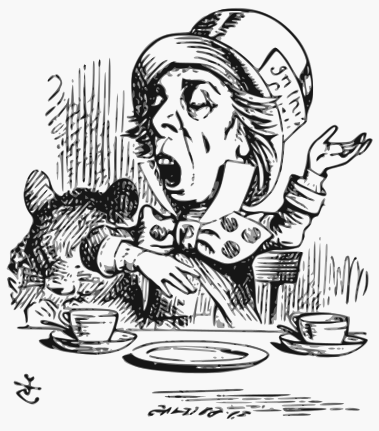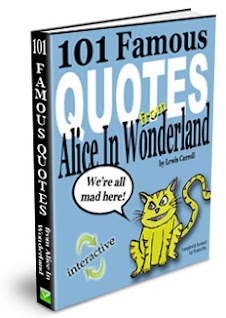The Mad Hatter was introduced along with other fantastical beings in Alice's Adventures in Wonderland. The Hatter first appears in Chapter 7: "A Mad Tea-Party".
In this whimsical encounter, Alice discovers the Hatter having tea with the March Hare and the Dormouse. The Hatter recounts to Alice that their perpetual tea-drinking is a consequence of his attempt to sing for the irritable Queen of Hearts, resulting in a death sentence for "murdering the time."
Miraculously escaping decapitation, the Hatter finds himself frozen at 6:00 pm indefinitely, courtesy of Time, referred to as a male entity by the Hatter.
During the tea party, the Hatter exhibits eccentric behavior, constantly changing positions at the table, making personal comments, posing unanswerable riddles, and reciting nonsensical poetry, ultimately compelling Alice to leave.
The Hatter resurfaces in Chapter 11: "Who Stole the Tarts?" as a witness at the Knave of Hearts' trial. The Queen seems to recognize him as the sentenced singer, and the King of Hearts warns him against nervousness, threatening immediate execution.
The Mad Hatter also makes a brief appearance in Through the Looking-Glass, identified as "Hatta". Facing legal troubles once again, the Hatter may not necessarily be guilty, as the White Queen explains the arbitrary nature of punishments in Wonderland.
He is also mentioned as one of the White King's messengers, along with the March Hare, going by the name "Haigha". Tenniel's illustration maintains the Hatter's signature top hat, depicted with a hatband reading "In this style 10/6" in the first edition.
Carroll's hometown of Stockport, where hat making was a predominant trade, inspired the Hatter character. During that era, it was not uncommon for hatters to exhibit signs of disturbance or confusion, often linked to mercury poisoning, leading to premature deaths.
However, the Hatter in Carroll's narrative does not display the typical symptoms associated with mercury poisoning, such as excessive timidity, diffidence, increasing shyness, loss of self-confidence, anxiety, and a desire to remain unnoticed and unobtrusive.
Lewis Carroll doesn't describe the hat's exact style in the text, but Tenniel's illustration establishes the iconic top hat with a price tag displaying the numbers 10 and 6, denoting the cost in pre-decimal British currency. This detail is further clarified in The Nursery tale "Alice" where the character's hat bears a price tag indicating ten shillings and six pence.
The Cheshire Cat initially labels the Hatter and his tea party companion, the March Hare, as "both mad." This reference to both characters takes place in the sixth chapter of Lewis Carroll's Alice's Adventures in Wonderland, titled "Pig and Pepper" during a conversation between the young protagonist Alice and the distinctive Cheshire Cat.
When Alice inquires about the residents of the area, the cat responds,
"In that direction lives a Hatter, and in that direction lives a March Hare. Visit either you like: they're both mad!"
Mad Hatter's Teaparty surely looks like the coziest garden party one could wish for! I for one would be delighted to go and have some tea and cake in that setting.John Tenniel's illustration truly captures the eeriness of the hall where
"There were doors all round the hall, but they were all locked; and when Alice had been all the way down one side and up the other, trying every door, she walked sadly down the middle, wondering how she was ever to get out again."
-Lewis Carroll
Here is a video by the The Royal Ballet where Alice (Lauren Cuthbertson) stumbles upon the Mad Hatter (Steven McRae) in Christopher Wheeldon's wonderful 2018 production.
If you are mad about Mad Hatter, check out these 5 whimsical quotes from him: https://alice-in-wonderland-quotes.com/mad-hatter-quotes/
[Mad Hatter illustration by John Tenniel: Wikimedia Commons]











No comments:
Post a Comment
+ + Click Here To See All Posts.